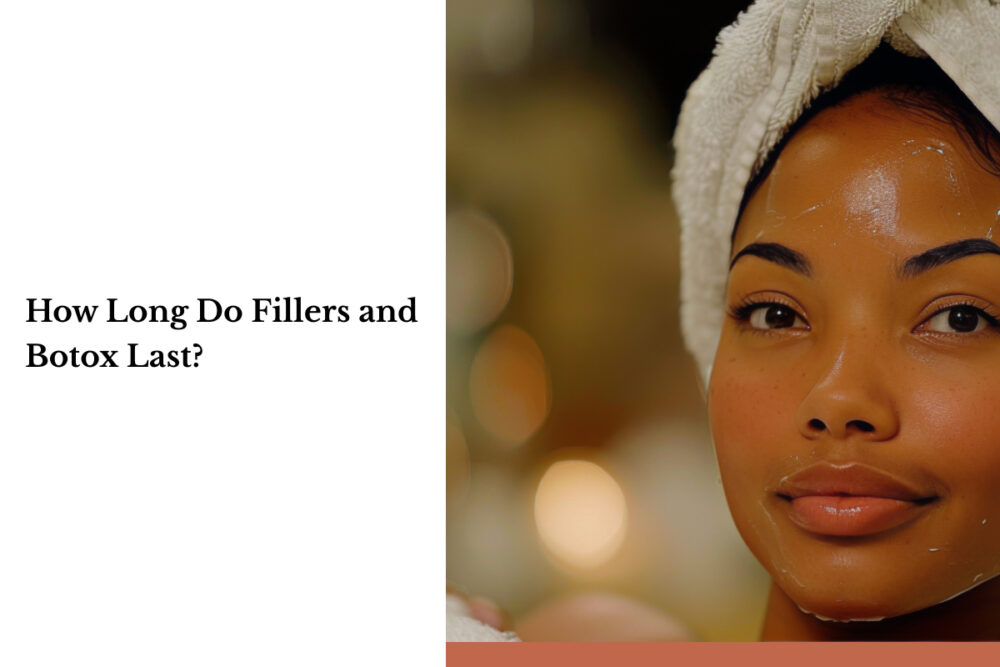One of the most common questions we hear at Form Medical Aesthetics is:
“How long do Botox and dermal fillers actually last?”
It’s a great question—because when you’re investing in your appearance and wellness, you want to understand not just the benefits, but also the timeline of results.
While there are general guidelines, the truth is that results vary from person to person. Let’s clear up misconceptions and dive into what really affects how long your Botox or filler results will last.
Understanding the Basics: Botox vs. Fillers
Before we get into timelines, let’s quickly break down the difference between these two popular treatments:
- Botox, Dysport, and Nuceiva are neuromodulators. They temporarily relax the muscles that cause dynamic wrinkles from expressions like frowning or squinting. Common areas treated include the forehead, glabella (“11s”), and crow’s feet.
- Dermal fillers are gel-like substances that add or restore volume, enhance facial contours, and smooth out deeper lines. Popular treatment areas include lips, cheeks, jawline, and under-eyes.
Still deciding which is right for you? Check out our post: Fillers vs. Botox®: Which Treatment Is Right for You?
How Long Do They Last?
Botox® & Neuromodulators: 3–4 Months (on average)
For most people, Botox® results last about 3 to 4 months. Factors that influence this include:
- Muscle activity – Stronger or more expressive facial muscles may metabolize product faster
- Metabolism – A faster metabolism may shorten the duration
- Consistency – Regular treatments can help your muscles respond better over time
- First-time use – We typically recommend a 2-week follow-up to assess results and adjust if needed
Concerned about looking “frozen”? Our post, Botox® Myths: Separating Fact from Fiction, explains how we achieve natural, expressive outcomes with expert injection technique.
Botox® is also used to treat conditions like excessive sweating (hyperhidrosis), chronic migraines, and TMJ-related tension, with similar or even longer-lasting results.
Dermal Fillers: 6 Months to 2 Years
The longevity of filler varies more widely, depending on:
- Filler type – Thicker fillers (e.g., in the cheeks or chin) last up to 2 years; softer fillers (e.g., lips) last 6–12 months
- Treatment area – Fillers break down faster in high-movement areas like the lips
- Your metabolism – Everyone absorbs filler differently
- Lifestyle habits – Smoking, sun exposure, and high-intensity exercise can shorten results
- Amount used – Subtle volume may fade faster; more comprehensive treatments may last longer
Want results that look refreshed, not overdone? Explore The Art of Natural-Looking Fillers for insight into our aesthetic philosophy.
What Impacts Longevity?
1. Your Unique Biology
Your skin’s elasticity, hydration levels, and metabolism all affect how long injectables last. That’s why we personalize every treatment plan.
2. Lifestyle Habits
Habits like smoking, tanning, and excessive cardio can accelerate product breakdown. Protecting your skin, staying hydrated, and managing stress can help maintain your results.
3. Skilled Injection Technique
Results depend just as much on how it’s done as what is used. Our experienced injectors use advanced techniques to deliver subtle, symmetrical, long-lasting enhancements.
4. Consistent Treatment
Regular Botox® every 3–4 months and filler touch-ups every 6–18 months help preserve your refreshed look over time.
Your Results, Your Journey
Injectables like Botox® and dermal fillers are more than just aesthetic tools—they’re part of an evolving journey in self-care, prevention, and confidence.
At Form Medical Aesthetics, we focus on safe, effective, and customized care in an open, supportive space. Whether it’s your first time exploring injectables or part of a long-term plan, our team is here to guide you every step of the way.
Book a consultation today to start your personalized aesthetic journey—and let’s create a plan that helps you look and feel your best.


